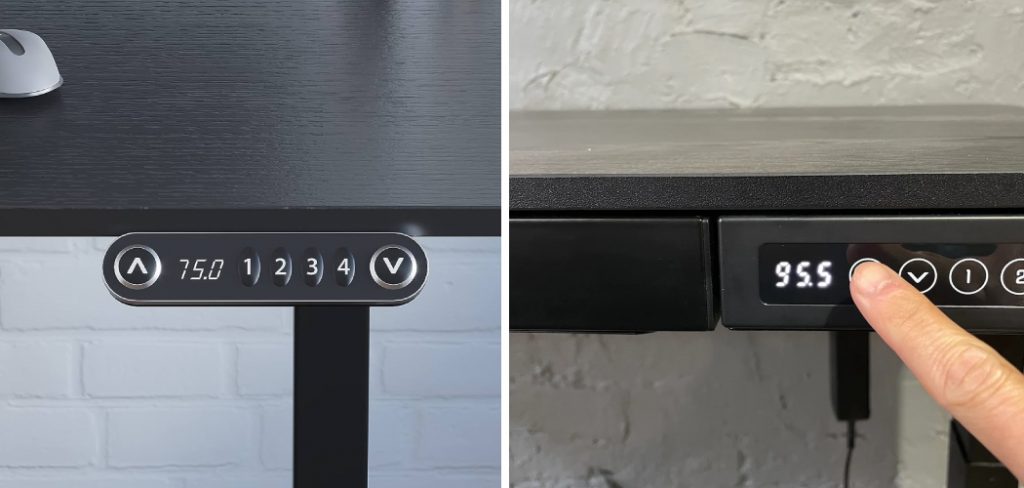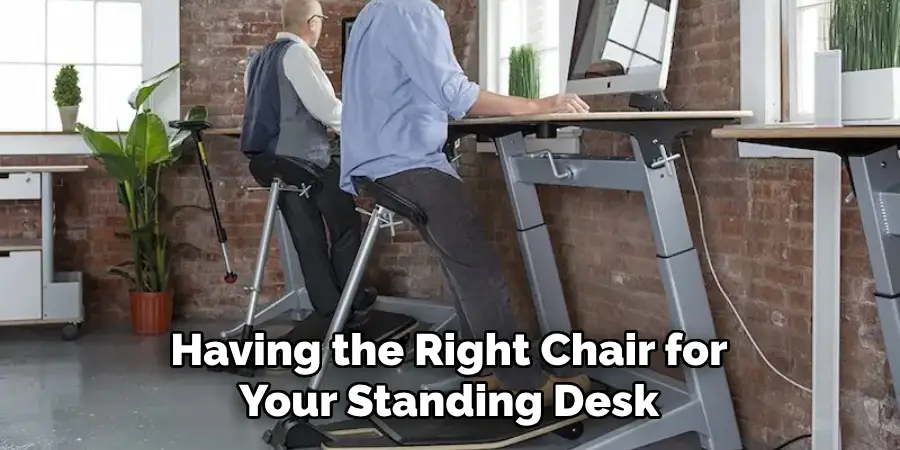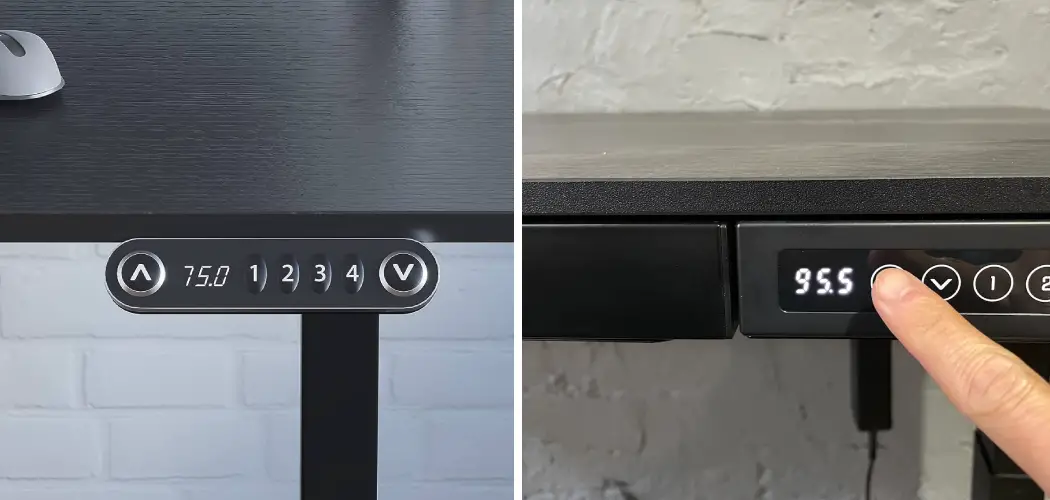Do you know how to set memory on standing desk? If not, don’t worry – you’re not alone. Many people do not understand how to make these adjustments and get frustrated when their computer or writing workspace isn’t set up properly.

In this blog post, we’ll explore the basics of setting memory on standing desks so that you can use your desk in an efficient way. With the right setup, it’s possible to save time and energy throughout your workday!
For those in the tech world, learning to use a standing desk can be complex and intimidating, as it involves multiple settings. One of the most important aspects of setting up your new workspace is adjusting the memory settings on your standing desk; it’s essential for providing an effective and comfortable working environment.
Here, we’ll explain how to set memory on a standing desk step-by-step so that you can get back to work quickly and comfortably.
Why May You Want to Set Memory on Standing Desk?
1. To Make It Easier to Switch Quickly Between Heights
One of the biggest benefits of having a standing desk is the ability to switch quickly between sitting and standing. If you want to be able to move your desk up or down without needing to manually adjust it each time, setting memory on your standing desk can help tremendously.
2. To Reduce Neck and Back Discomfort
Having your monitor at the wrong height for an extended period of time can cause neck and back discomfort. If you program your desk with memory settings, it will automatically adjust to the most comfortable height for you, eliminating the need for manual adjustments and reducing strain on your body.
3. To Maintain Healthy Posture
Having a good posture while working is essential for your overall health. Setting memory on your standing desk can help ensure that you’re always at the proper height, eliminating the need to constantly monitor and adjust your position.

Setting memory on your standing desk is a great way to make sure that you can easily switch heights without having to manually adjust each time. It also helps keep your posture healthy and reduces strain on your neck and back.
10 Ideas on How to Set Memory on Standing Desk
1. Choose a Predetermined Interval for Setting Memory
One of the best ways to set memory on your standing desk is to choose a predetermined interval that you want to use. This allows you to easily recall the settings without having to manually adjust them every time you change position.
2. Set Reminders throughout the Day
You can also set reminders throughout the day so that you remember when it’s time to switch positions and adjust your standing desk. You can set a timer, or use an app to remind you to change positions.
3. Adjust the Height of Your Desk
The height of your desk is one of the most important factors when setting memory for your standing desk. Make sure that you are comfortable in each position and be mindful of any health conditions that may make some postures more difficult.
4. Choose the Right Chair
Having the right chair for your standing desk is essential to setting memory. Make sure that it is comfortable and fits your body so that you won’t be tempted to slouch when standing up for long periods of time.

5. Use Visual Cues
You can also use visual cues to remind yourself where the memory is set. This may be a photograph, artwork, or an inspiring quote that you can look at when adjusting the position of your desk.
6. Use Voice Recording
Using voice recording to remind yourself of where the memory is set for your standing desk can be helpful. You can record yourself saying the exact settings and then play it back whenever you need to adjust the height of your desk.
7. Adjust the Tilt
Another important thing to keep in mind when setting memory for your standing desk is to adjust the tilt. This will ensure that you are comfortable in each position and won’t have any strain on your joints or back muscles.
8. Use a Timer
Using a timer can also help you to remember when it’s time to adjust your standing desk. You can set it for a certain amount of time and then be reminded when it’s time to switch positions. Also make sure to set a timer for when it’s time to sit down and relax.
9. Write Down the Settings
Writing down the exact settings for your standing desk can be helpful in setting memory. You can easily refer back to this list when adjusting the position of your desk, so that you don’t forget any important information.
10. Bring a Friend
If you’re having trouble setting memory on your own, don’t be afraid to ask someone for help. Having a friend or family member adjust the settings of your standing desk can make it much easier and faster to remember where the settings are set. Plus, it’s always nice to have someone around who understands the importance of standing desks!

Following these 10 tips will help you to easily set memory on your standing desk, so that you can stay comfortable and productive throughout the day. With a little bit of preparation and practice, you’ll be able to adjust your standing desk with ease!
Frequently Asked Questions
What Precautions Should I Take When Setting Memory on My Standing Desk?
When setting memory for your standing desk, it is important to make sure that the height adjustment settings will not be too low or too high. Additionally, you should take into consideration how long you plan on using the desk in a single sitting and adjust accordingly.
It can also be beneficial to set different heights for different parts of the day, such as standing for most of the morning and sitting in the afternoon. Finally, make sure to keep any cords out of the way to avoid tripping hazards.
How Many Memory Settings Can My Standing Desk Have?
The number of memory settings that your standing desk can have will depend on its make and model. Generally speaking, most desks are capable of storing between one and four different heights in memory.
However, this may vary depending on the specific model you have. If you aren’t sure how many memory settings your desk can store, consult the manual that came with your standing desk or contact the manufacturer for more information.
What Is the Best Way to Store My Memory Settings?
The best way to store your memory settings is to assign them a unique number or label. This will make it easier to remember which setting is assigned to which activity throughout the day. Additionally, if you are sharing your standing desk with someone else, assigning each user their own settings can help prevent accidental adjustments.
Is There a Safety Feature on My Standing Desk?
Many standing desks come with a safety feature to prevent accidental height adjustments. This usually takes the form of either an electronic lock or manual lock that needs to be disengaged before any changes can be made. This is a great way to ensure that you don’t accidentally change the settings on your standing desk while in use.

What Else Can I Do To Make It Easier To Adjust My Standing Desk?
One way to make it easier to adjust your standing desk is to purchase an adjustable footrest. This will allow you to adjust the height of your standing desk without needing to bend down and strain your back.
Additionally, having a chair or stool near your desk can help reduce the amount of time you spend reaching for items on the floor while adjusting your desk. Finally, make sure to keep your desk area well-lit and clutter free for easy access.
These are some of the main questions to consider when setting memory on your standing desk. Taking into account the features of your specific model, as well as any safety precautions or ergonomic considerations, should help you find a comfortable and convenient setup that works best for you.
Conclusion
In conclusion, setting up the memory on a standing desk does not have to be difficult or complex. With just a few steps and the right tools, you can make sure that your standing desk is set up to give you maximum comfort and convenience.
Make sure to customize the settings for your height, elbow angle, what slots you use and more so you can enjoy an ergonomic experience that will last for years.
Now you know how to set memory on standing desk! Lastly, always remember to take periodic breaks if you’re using a standing desk for long periods of time – this will help keep your back strong while also ward off fatigue and discomfort. Investing in a high quality, adjustable standing desk is an investment towards better health and greater productivity!

